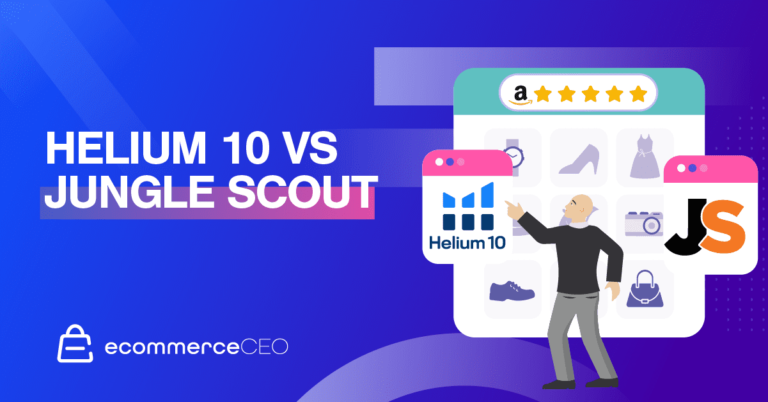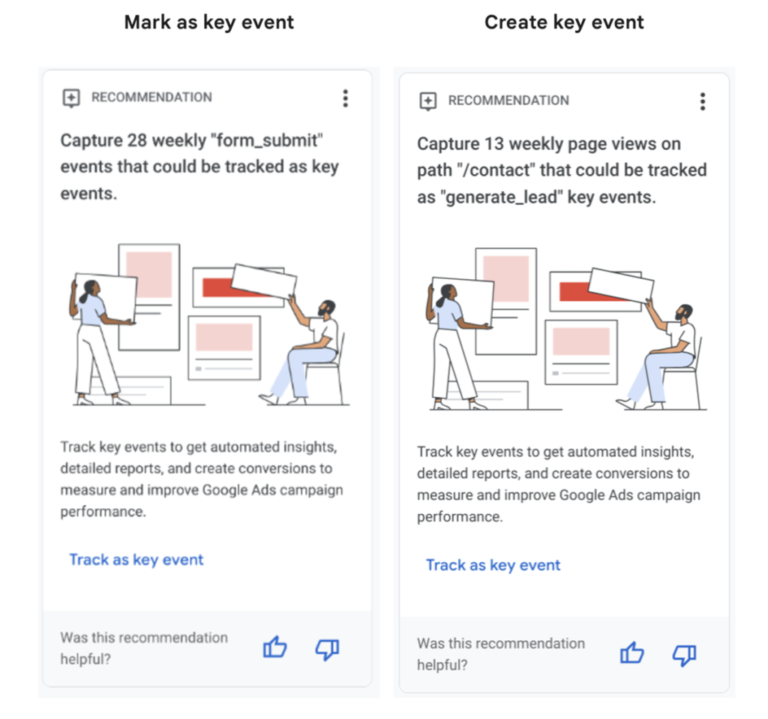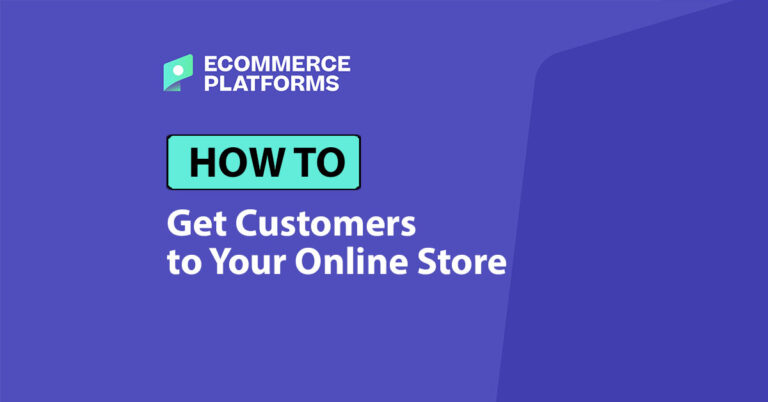All ecommerce sites need conversions. Without them, you’ve just got a site that might be great-looking and even fun to visit but absolutely no use in ecommerce. It’s the same with a brick-and-mortar store. It’s great to have customers come in and check out the goods. But if none of them buy, that store’s not going to be in business for long.
This is why ecommerce conversion rate optimization is crucial. By bringing it in, you will dramatically improve your ecommerce site’s performance. Happily, there are some easy-to-implement steps you can take to do just that. We’ll go through some of the best. But, before we do, let’s look at exactly what we mean by ecommerce conversion rate optimization.
What Is Ecommerce Conversion Rate Optimization?
Basically, ecommerce conversion rate optimization (CRO) is a process whereby a sales site becomes more likely to make more sales. There are numerous ways this can happen, as we’ll see shortly.
There’s a lot to consider, and the amount of data it’s possible to work with can be a little overwhelming. Therefore, it can be useful to think about how exactly you use the data and your data governance definition. In other words, how you gather, store, and stream data for maximum organizational effectiveness. Thinking about this will help your site become more responsive and will assist your CRO.
CRO will enable not just an improvement in sales. It will also help cut promotion costs, and it will tell you more about your customers. This information can come in very handy when you want to target particular sectors. It will also boost your Google rankings, which is a significant consideration in ecommerce.
So, CRO is a big deal. Let’s see how you can start to use it.
Ways to Start With Ecommerce Conversion Rate Optimization
There are many methods you can use to optimize your CRO. Let’s consider six of them.
1. User Observation
If you want to enhance your appeal to your potential customers, you need to see what they’re doing when they visit. By using recordings and click heat maps, you can see where users are tending to go on your site. You can then see what’s working (your site’s ‘hooks’) and learn to use the characteristics of those portions throughout your site.
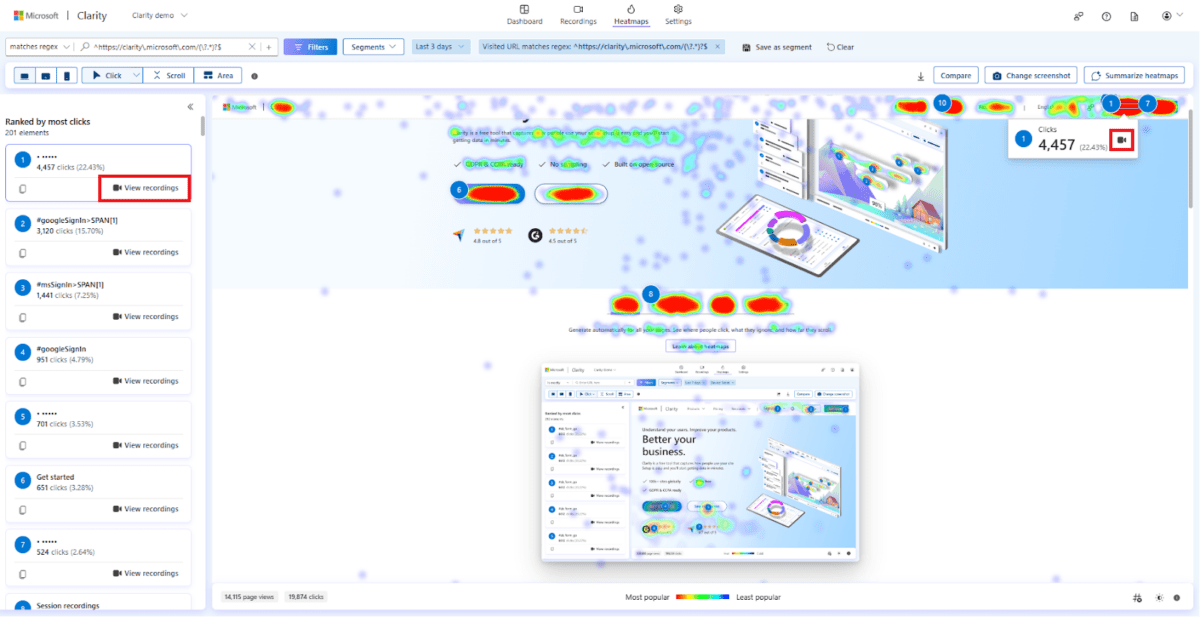
Image Sourced from Microsoft Learn
Even more importantly, you can spot what’s not working: parts of the site that are standing in the way of conversion (your site’s ‘barriers’). You can then implement corrective work so that the barrier no longer operates as such, and your average conversion rates will soar.
This can be of use in all kinds of websites. Say you have a site that’s all about fraud prevention and detection. One part of the site has a banner that looks like a link, and, sure enough, users are clicking on it. But it is not a link, so users end up frustrated. When your click heat map shows you this, you can see clearly that you should turn it into a link.
Whenever you want to improve your appeal to customers, you will do very well to see how they interact with your site. This reveals a huge amount of user experience data that you can put to work immediately.
2. Use Appropriate Language
Let’s consider product descriptions. Make no mistake: writing them is an art. They need to have an attractive succinct layer, followed by a more detailed story that informs and compels. There should be wording used that chimes with your target audience.
An awareness of who you’re talking to will make all the difference to your ecommerce strategy. If you have a product that’s aimed at a more ‘establishment’ customer, who is perhaps a little older and more conventional, you need to think in terms of proper sentences using the kind of orthodox grammar that would have earned you a great mark in high school.
For a funkier, edgier product with a younger customer base, you can afford to be a little more creative with your language. You can feel free to sacrifice grammatical exactitude on the altar of commercial impact. So, Apple can go with a slogan like ‘Think different’. Anyone with even a passing acquaintance with adverbs will know that the phrase should read ‘Think differently’. But the former isn’t as punchy as the latter. So, ‘different’ it is.
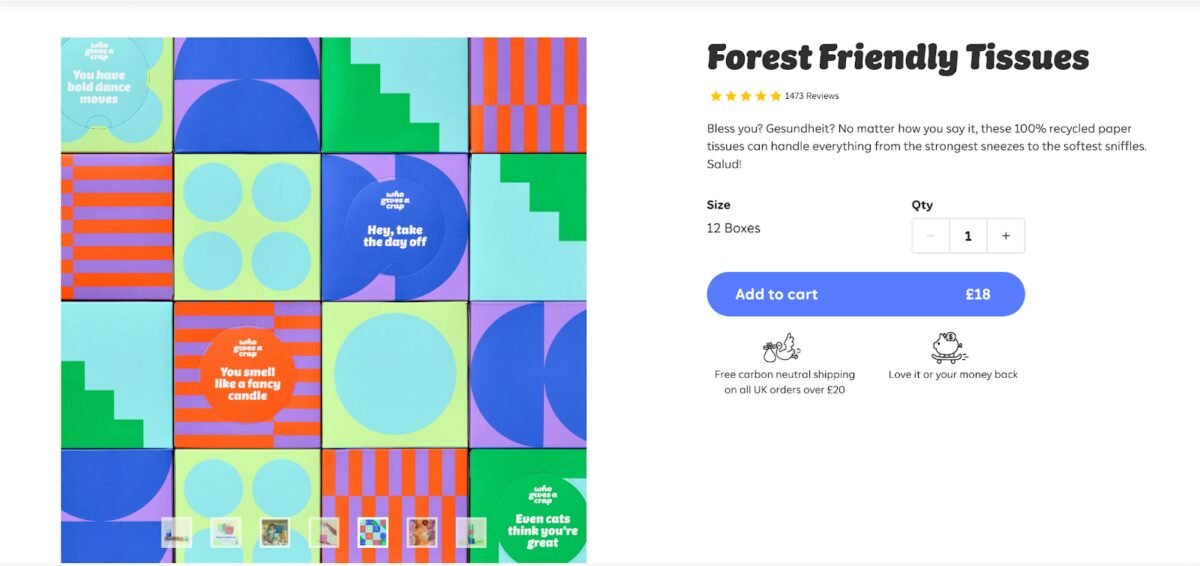
Screenshot Sourced from whogivesacrap.org
This kind of targeting and tone variation to improve the customer experience is one of the most important ecommerce marketing strategies.
3. Use Social Proof
Customers love social proof. Customer reviews are a form of evidence of quality. So, you have two jobs here:
- Firstly, encourage your customers to leave reviews using well-timed pop-ups and incentives. You can offer your prospective reviewer the chance to be entered into a draw, perhaps, or to receive a small discount on their next purchase.
- Average out your customer testimonials, then make sure that the (hopefully fabulous) star rating displays clearly under the product name, together with a link to your review section if the customer should want a more detailed breakdown.
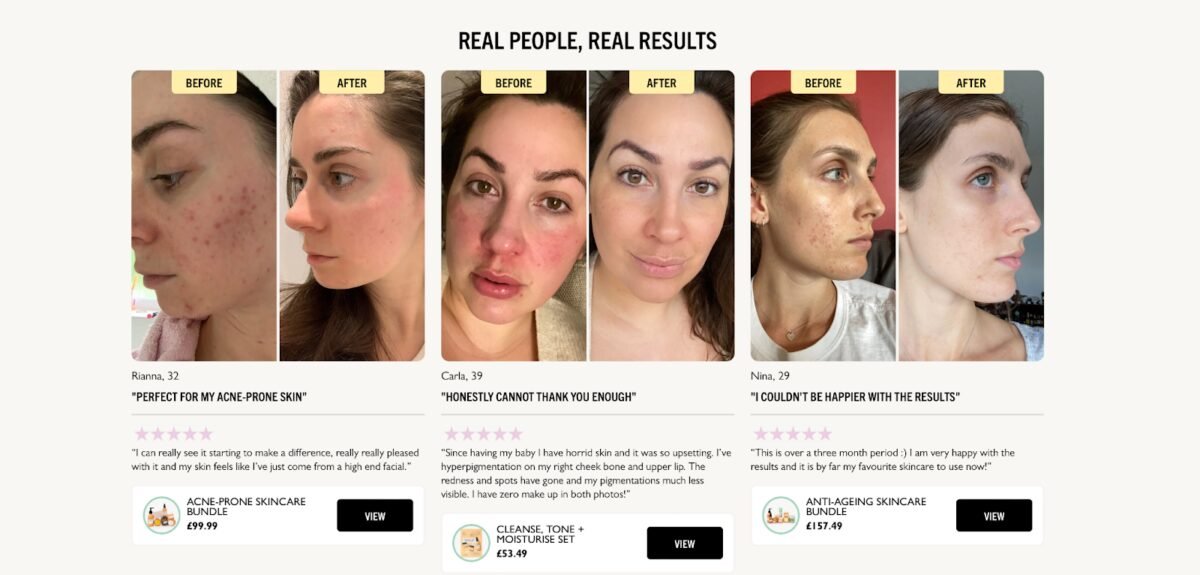
Screenshot Sourced from Upcirclebeauty.com
Ecommerce platforms can vary, so make sure that whichever one you use gives you the opportunity of making the most of social proof.
4. Optimize the Checkout
Going back to observing your site visitor behavior, you can usually see very clearly where the barriers are just by identifying where visitors tend to abandon your site. One of the key areas in this regard is the checkout process.
Why is this? Because the very best sites now make the checkout flow incredibly smooth. Take Amazon. Online shoppers can buy a product generally with no more than two clicks. This kind of high-performing site makes less slick sites seem all the clunkier.
Start by ensuring that your “add to shopping cart” CTA is clear. Use responsive design so that the action button is on screen with both desktop and mobile experiences.
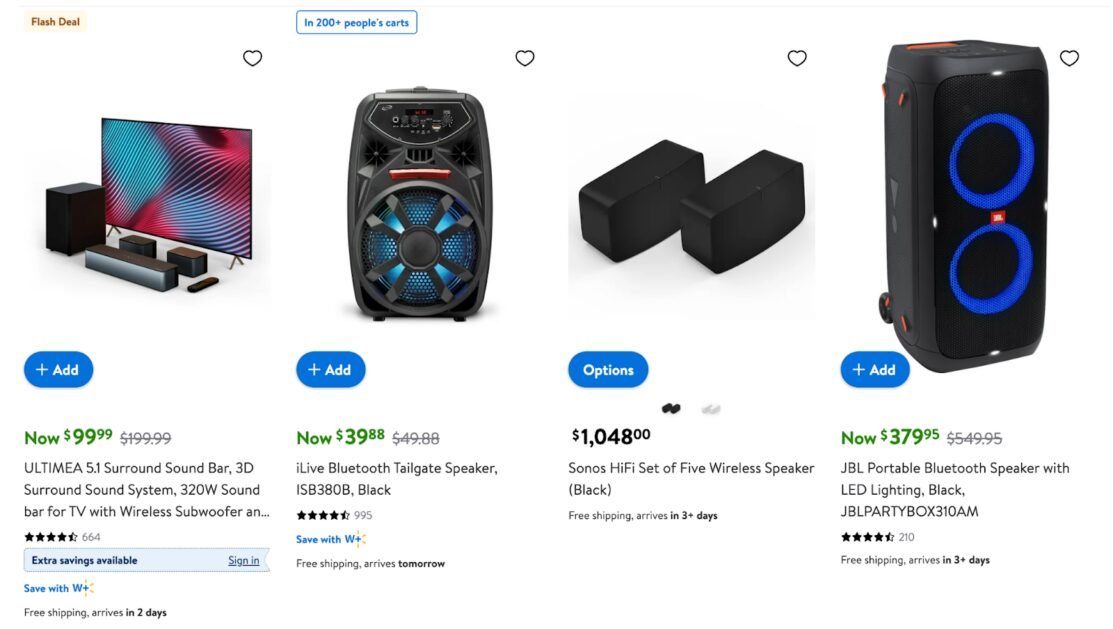
Screenshot Sourced from Walmart.com
If you’re a customer, asked to complete lengthy registration forms galore and credit card payment forms that go on forever, you’re not going to be well-disposed toward the site you were meaning to buy from. You may pull out altogether, either from frustration or simply because of circumstances.
So, site owners should go through the process themselves to see where it might be smoothed out and streamlined. An obvious shortcut you can employ when it comes to payment is to put in a PayPal link. This speeds things up considerably and helps lower cart abandonment rates.
5. Attend to Off-Site Matters
Never forget that your site doesn’t exist in a vacuum. The factors that influence your brand’s reputation will also affect your ecommerce conversion rates. Take that social proof we talked about. If customers are praising the customer service of your agents or the product’s build quality, this will help with your ecommerce conversion rate optimization.
However, on the flip side, if there are problems that surface in your user feedback, then you need to attend to them without delay. Let’s posit that your customers cite having to wait a huge period of time for their goods. You then need to dive into your fulfillment operation to see what’s occurring. It might be the case that there are problems with the manufacturing process, in which case you might need to employ supply chain optimization tools to eradicate the problem.
It’s often tempting to think of cyberspace as a domain entirely separate from the concrete world, but this is a signal error. There are significant links between the two that are overlooked at your peril.
6. Ask Customers for Data
There are two items of information that you can seek from your customers that will help ecommerce conversion rate optimization:
- How did customers find your site? It doesn’t take long to ask this, and it can help build on your site’s appeal. One thing’s for sure: if you want conversions, you need visitors in the first place. So you need to be attracting as many as possible, whether via better advertising or other means.
- Why is a customer about to leave the site? This is absolutely vital to know. What’s putting them off? Asking customers what might be the issue is not only useful to you. It also shows the customer how concerned you are about making their experience as good as it can be, so this can be a very powerful tool.
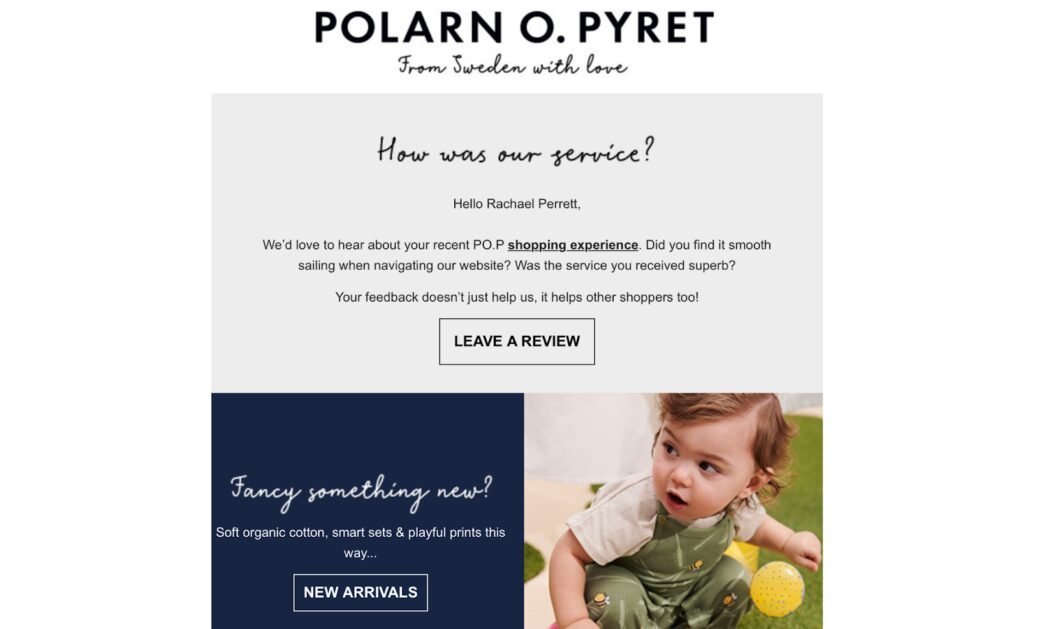
Screenshot Sourced from Polarn O. Pyret customer email
Securing the Purchase and Staying on Top
Using these techniques, your site will deliver the ecommerce you want to see happen and you’ll be turning your visitors into customers in huge numbers. But don’t stop there. Ecommerce conversion rate optimization is all about continuous improvement. Just because a site’s doing well today doesn’t mean it’ll do well tomorrow.
This is because it’s a rapidly evolving environment and it’s all too easy to fall behind. So, keep looking at your site the way a customer does. And look at other sites, too. Grab the best ideas and make them your own. Because all’s fair in love and ecommerce.
